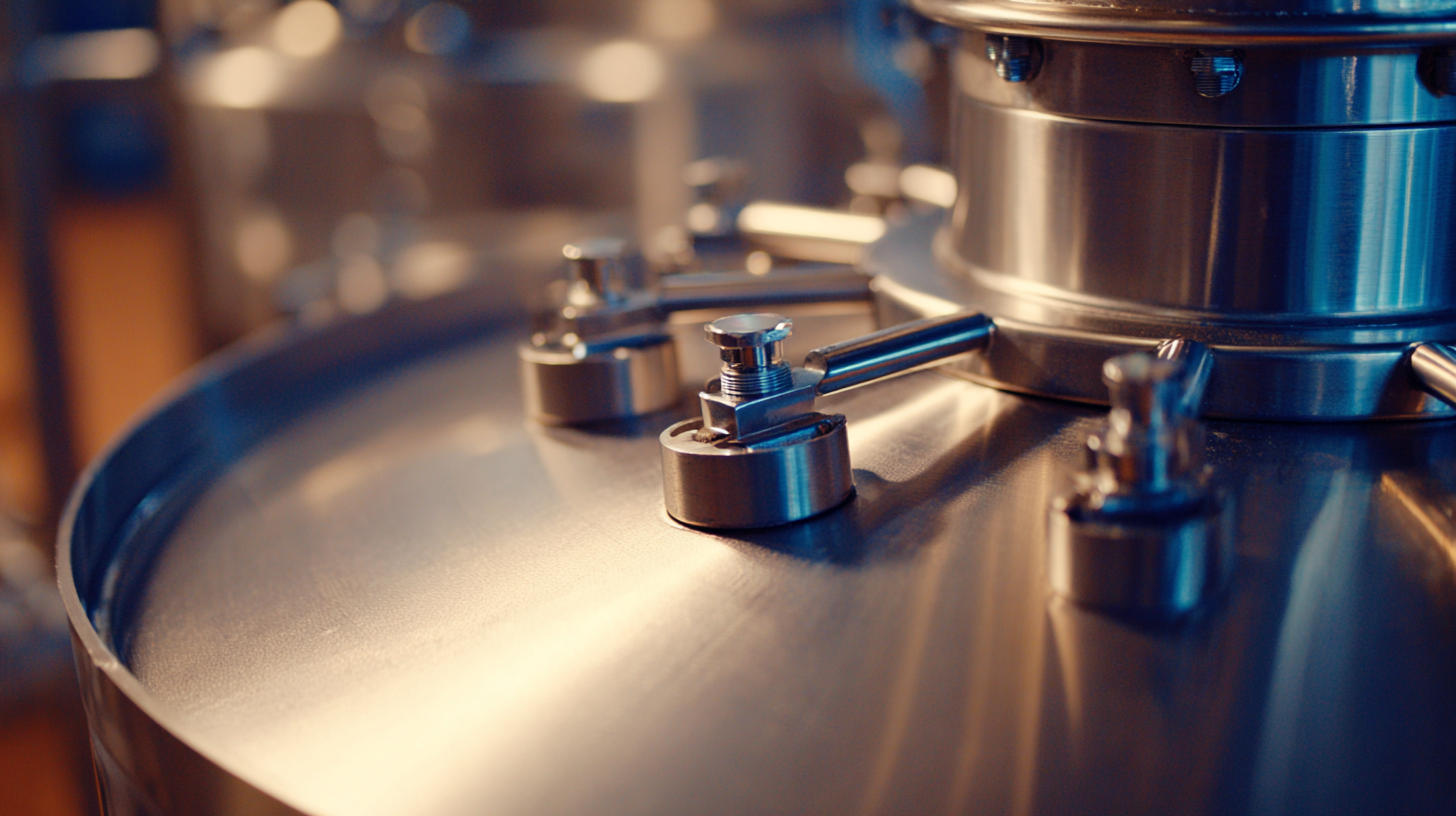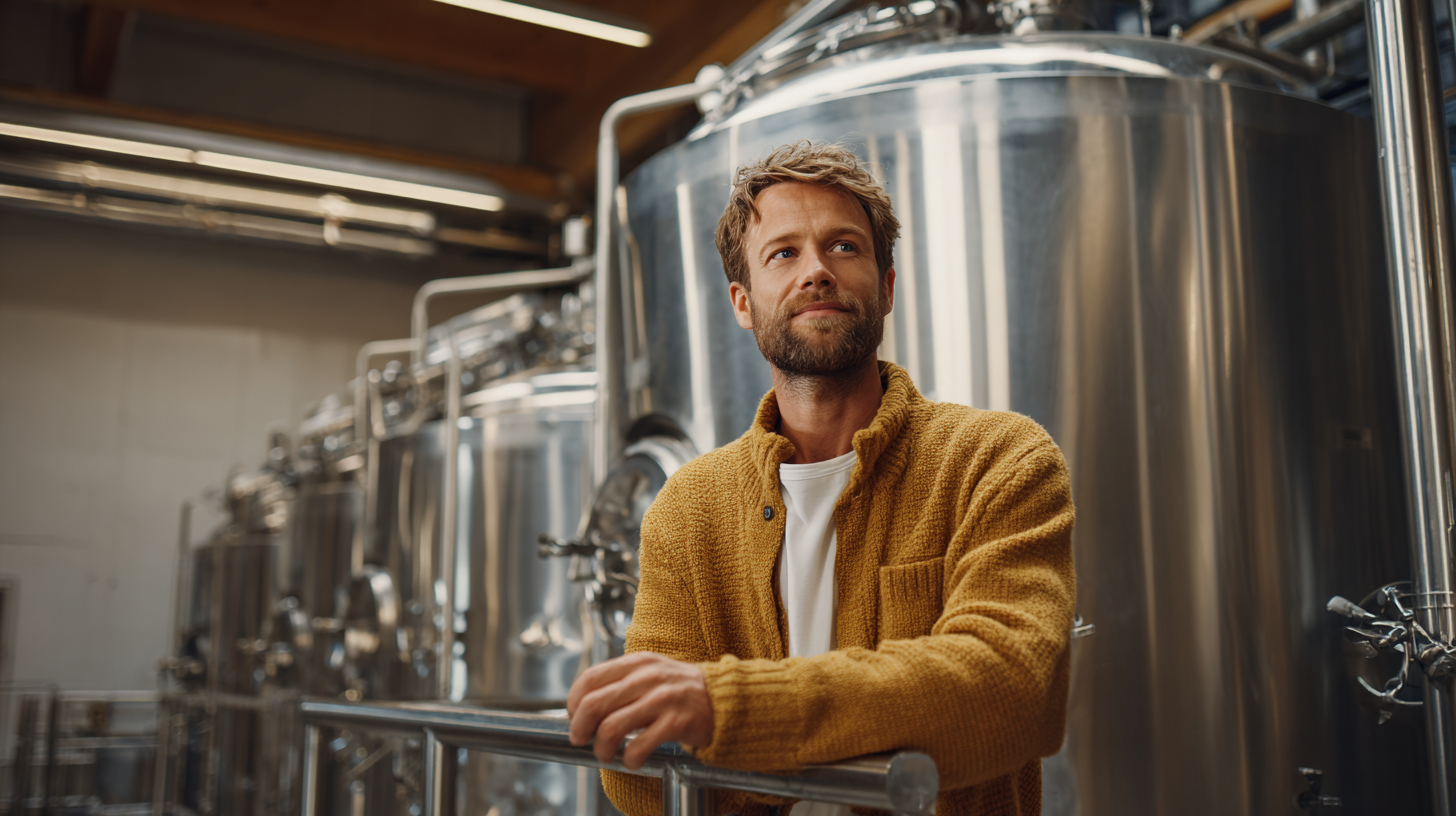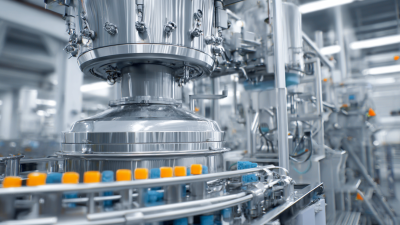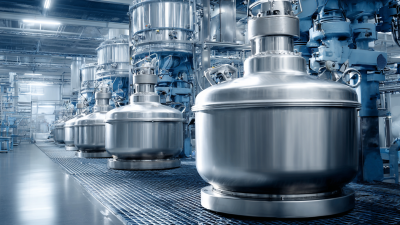Blog
Essential Tank Mixer Guide: Mastering Mixing Techniques for Optimal Results
In the industrial mixing landscape, the efficiency and effectiveness of a tank mixer can significantly influence production outcomes across various sectors, from pharmaceuticals to food processing. According to a report by MarketsandMarkets, the global mixer market is projected to reach $25.88 billion by 2025, reflecting a growing emphasis on mixing technologies that enhance product quality and consistency. Mastering the art of mixing not only optimizes processes but also ensures compliance with stringent industry regulations. Whether you're dealing with viscous materials or delicate emulsions, understanding the dynamics of tank mixers is crucial for achieving optimal results. This guide will delve into essential mixing techniques, providing insights that empower professionals to elevate their mixing practices and drive operational excellence.

Top 5 Tank Mixer Types for Diverse Industrial Applications
When it comes to optimizing mixing processes in industrial applications, understanding the different types of tank mixers is essential. In recent research, innovative techniques such as the use of the Discrete Element Method combined with Volume of Fluid (DEM-VOF) are paving the way for better suspension and dispersion dynamics of non-spherical particles in stirred tanks. This approach can significantly enhance the performance of mixers employed in biodigesters and other industries that require specific mixing properties for complex fluids.
Among the diverse industrial applications, different tank mixer types cater to unique needs. For example, side-entering agitators prove to be effective in controlling mixing processes, particularly when dealing with viscoelastic fluids. A study found that these mixers exhibit distinct behavior when applied to biogas fermenters, emphasizing the importance of tailored mixing solutions. Reports indicate that improved mixing techniques, especially with technologies like interface baffles and rotor-stator mixers, enhance the efficiency and homogeneity of solid suspensions and various fluids, critical for industries ranging from pharmaceuticals to food production. As the industry's demands grow, leveraging these advanced mixing technologies becomes paramount for optimal results.
7 Key Factors to Consider When Choosing a Tank Mixer
When selecting the right tank mixer for your application, it's crucial to consider several key factors that influence both efficiency and performance. First, the viscosity of the liquid plays a significant role—according to a recent industry report by Grand View Research, the global mixer market is projected to grow at a CAGR of 7.5% from 2022 to 2030, largely driven by increasing demand in industries with high-viscosity fluids, such as food processing and chemicals. Selecting a mixer that can handle the specific viscosity requirements will ensure optimal mixing and prevent issues like settling or phase separation.

Another important factor is the mixer design, which encompasses everything from impeller type to tank geometry. A study published in the International Journal of Chemical Engineering emphasizes that proper mixer design can reduce power consumption by up to 30%. Additionally, understanding the characteristics of your materials—such as density, thermal properties, and particle size—can help in determining the most effective mixer configuration. The right choice not only enhances product quality but also leads to significant operational cost savings, reinforcing the importance of these considerations in the mixing process.
Essential Mixing Techniques: 6 Methods for Effective Liquid Blending
When it comes to optimizing liquid blending processes, understanding effective mixing techniques is crucial. According to a recent report by the Mixing Technology Association, improper mixing can lead to inconsistent product quality and substantial waste, with estimates suggesting that over 20% of production costs are attributable to inefficient mixing practices. To enhance the performance of tank mixers, utilizing the right techniques can make a significant difference.
One of the essential methods is the use of turbulent mixing, which promotes thorough interaction between liquids and reduces the formation of stratified layers. Turbulent flow can enhance mass transfer rates, making it ideal for applications requiring rapid homogeneity. Another technique, known as batch mixing, is particularly effective for small-scale production, allowing precise control over ingredient incorporation. Batch mixing systems can achieve uniform blends in less time, which is crucial for industries like pharmaceuticals, where product consistency is paramount.
Moreover, the adoption of advanced technologies, such as computational fluid dynamics (CFD), has been linked to improvements in mixer design, helping engineers create equipment that can significantly boost operational efficiency and product quality. By implementing these techniques, industries can mitigate common challenges in liquid blending and drive better profitability.
4 Common Challenges in Tank Mixing and How to Overcome Them
When it comes to tank mixing, tackling common challenges is essential for achieving optimal results. One major challenge is achieving uniformity in the mixture. Variations in viscosity and density can hinder consistent blending. To overcome this, operators should consider using strategically placed baffles within the tank to enhance circulation, ensuring that all components mix evenly throughout the entire volume.
Another prevalent issue is the formation of dead zones, where liquid remains stagnant and fails to blend effectively. This can be addressed by employing the right type of mixer, such as a turbine or paddle mixer, depending on the properties of the materials involved. Additionally, adjusting the mixing speed and duration can help minimize dead zones, allowing for more efficient mixing performance. Understanding the specific requirements of the materials being mixed is key to optimizing the mixing process and overcoming these challenges.
Essential Tank Mixer Guide: Mastering Mixing Techniques for Optimal Results
This bar chart illustrates four common challenges in tank mixing and their corresponding difficulty levels based on a scale of 1 to 10. Understanding these challenges can help in mastering mixing techniques for optimal results.
Best Practices for Maintaining Your Tank Mixer for Longevity and Efficiency
Maintaining your tank mixer is crucial for ensuring its longevity and efficiency. Regular maintenance not only optimizes its performance but also minimizes operational costs. To start, routinely check and replace worn-out or damaged parts. Components like seals and bearings are often subjected to wear and tear, and timely replacements can prevent more significant issues down the line.
Another key practice is to clean the mixer thoroughly after each use. Residue buildup can lead to corrosion and affect the mixing quality. Utilize appropriate cleaning agents and techniques to ensure all surfaces are free from contaminants. It’s also vital to inspect the motor and electrical connections regularly to ensure everything is functioning smoothly.
Lastly, consider investing in training for your operators. Educating them on the correct operating procedures and maintenance routines can drastically improve the lifespan of your tank mixer. Encourage them to observe any unusual sounds or performance issues during operation, as early detection can save time and resources in repairs. By implementing these best practices, you will ensure your tank mixer remains a reliable asset in your operations.

Related Posts
-

5 Essential Benefits of Using a Chemical Mixer for Your Manufacturing Process
-

Innovative Tank Mixer Applications Across Various Industries
-

Ultimate Guide to Choosing the Right Chemical Mixer: Key Features and Industry Insights
-

7 Essential Tips for Choosing the Right Chemical Mixer for Your Industry Needs
-

Innovative Solutions for Industrial Pumps to Enhance Efficiency and Reduce Costs
-

Innovative Applications of Diaphragm Pumps Across Various Industries
